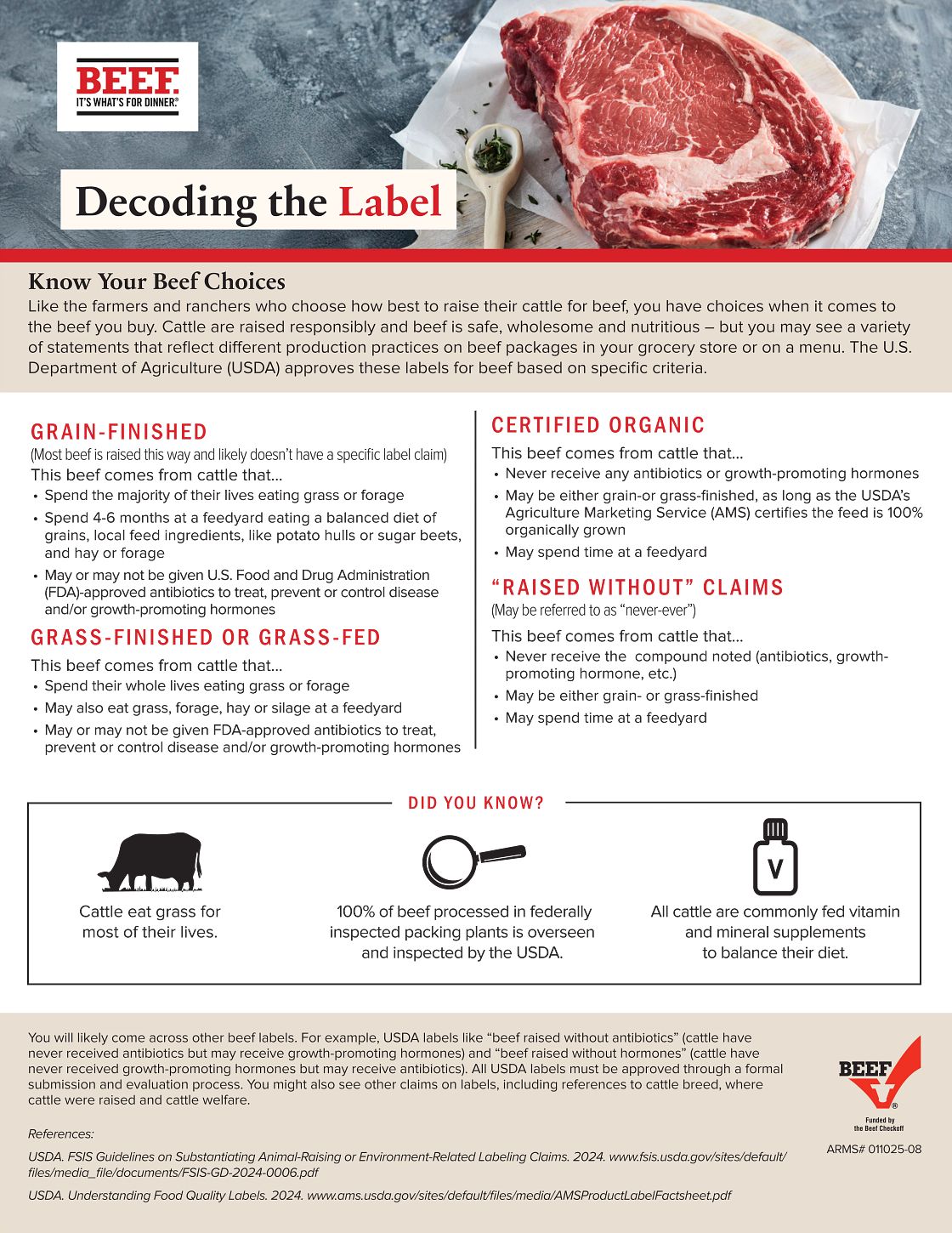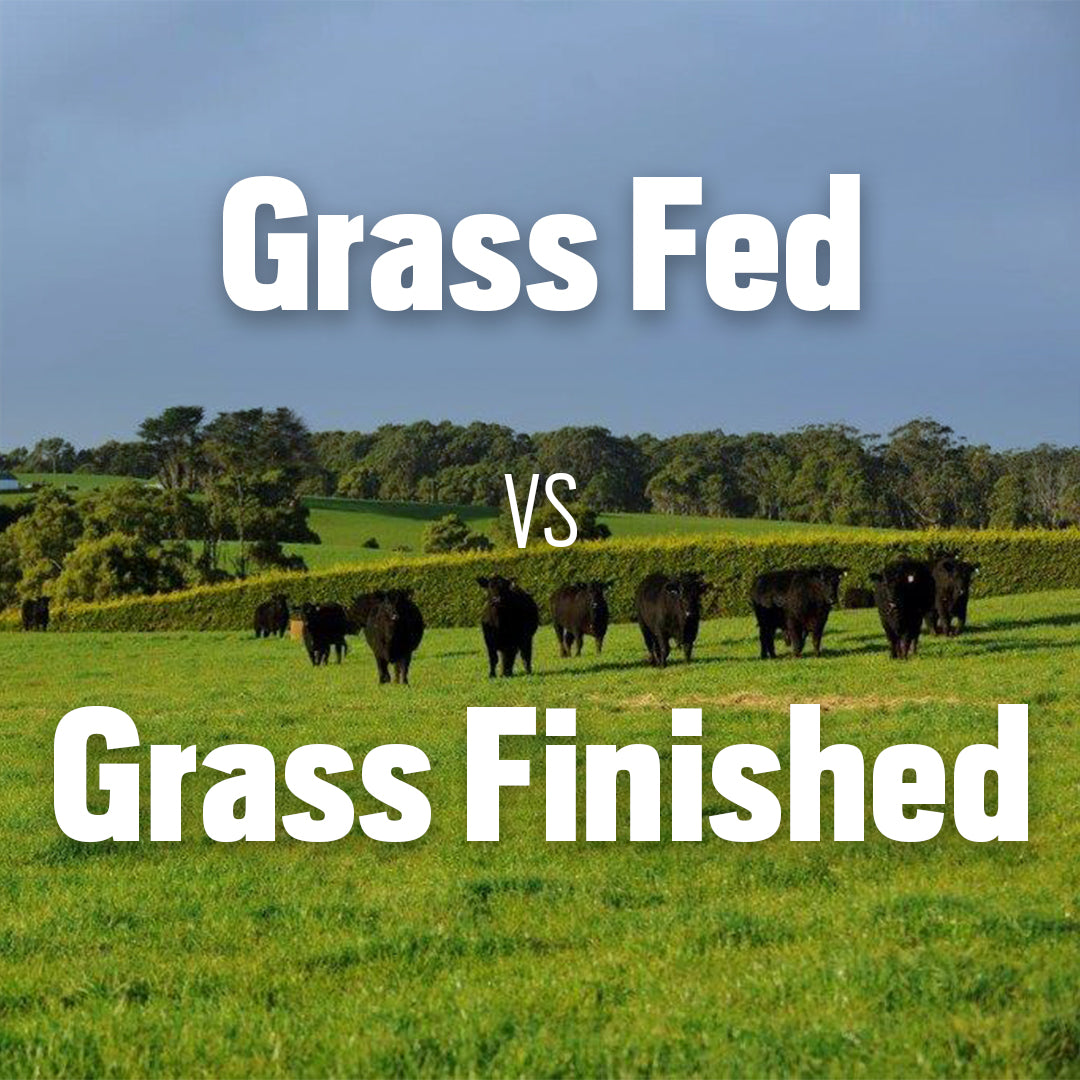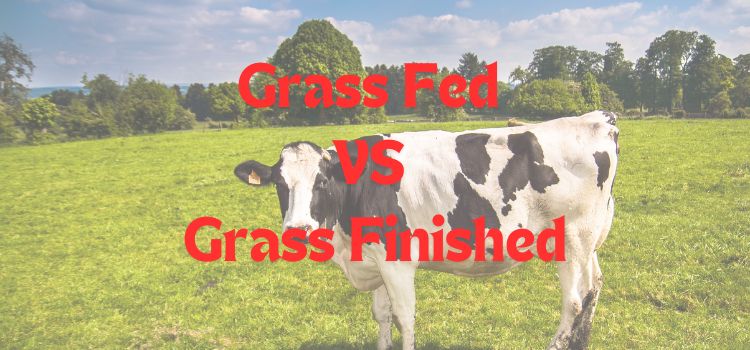As an Amazon Associate, I earn from qualifying purchases.
Grass-fed animals eat grass for most of their lives. Grass-finished animals eat only grass until slaughter.
Grass-fed and grass-finished beef are popular among health-conscious consumers. Both terms refer to cattle’s diets but have distinct meanings. Grass-fed cattle eat grass for a significant part of their lives, though they may be grain-finished. Grass-finished cattle, on the other hand, consume only grass and forage until they are slaughtered.
This difference impacts the nutritional profile and taste of the meat. Grass-finished beef often contains higher levels of beneficial fats like omega-3s. Choosing between the two depends on personal health goals and dietary preferences. Understanding these terms can help make informed decisions when purchasing beef.

Credit: www.beefitswhatsfordinner.com
Grass Fed
Grass-fed animals eat grass for most of their lives. They may eat other plants too. Farmers usually raise them on pasture.
Grass-fed animals eat grass and plants. They do not eat grains or processed feed. Their diet is natural and simple.
Grass-fed meat is rich in omega-3 fats. It has more vitamins like A and E. It also contains antioxidants. This makes it healthier.
Grass Finished
Grass finished animals eat only grass and forage. No grains are given to them. This diet is maintained until they are harvested. These animals often roam freely in pastures. They have a more natural lifestyle compared to grain-fed animals.
Grass finished animals eat fresh grass, hay, and silage. Silage is fermented grass or other green fodder. This diet helps in producing leaner meat. These animals do not consume grains at any point in their lives.
Grass finished meat has higher omega-3 fatty acids. It also contains more antioxidants. The meat is lower in total fat. It is a healthier option for many people. Grass finished meat is often richer in vitamins like Vitamin E.
Key Differences
Grass-fed animals eat grass for most of their lives. They may eat other foods later. Grass-finished animals eat only grass until they are processed. This makes their diet more natural. Both feeding practices affect the meat’s flavor.
Grass-fed animals might switch to grain before processing. This often happens in the last few months. Grass-finished animals eat grass their whole lives. This takes more time and care. It often results in higher costs.
Grass-fed meat is more common in stores. It is often cheaper. Grass-finished meat is harder to find. It costs more due to the longer feeding process. Both types can be found at farmers’ markets.
Health Implications
Grass-fed animals eat grass their entire lives, while grass-finished animals consume only grass until slaughter. This difference affects the nutritional content of the meat, impacting omega-3 fatty acids and antioxidants levels.
Omega-3 Fatty Acids
Grass-finished beef has more omega-3 fatty acids. Omega-3s are good for the heart. They help reduce inflammation.
Antioxidant Levels
Grass-finished beef contains higher antioxidant levels. Antioxidants protect cells from damage. They improve overall health.
Fat Content
Grass-fed beef is leaner than grain-fed beef. It has less total fat. This makes it a healthier choice.
Environmental Impact
Grass-fed animals often roam freely. This promotes natural grazing habits. Grass-finished animals follow similar practices. Both methods can lead to healthier soil. Healthier soil supports more plant growth. This can help in restoring ecosystems. Sustainable farming practices are crucial for our planet.
Grass-fed animals need large pastures. They graze over wide areas. Grass-finished animals also need large spaces. Intensive farming uses less land but harms the soil. Grass feeding promotes better land use. It supports biodiversity. This helps the environment in the long run.
Grass-fed animals produce less methane. Methane is a harmful greenhouse gas. Grass-finished animals also produce less methane. Feeding animals grass can reduce overall emissions. This helps in fighting climate change. Lower carbon footprints are better for the earth.

Credit: www.eatpre.com
Economic Considerations
Grass-fed beef is often more expensive. Grass-finished beef usually costs even more. This is because raising these animals takes more time. Consumers must be ready to pay a higher price for these products.
Farmers need more land for grass-fed and grass-finished cattle. This requires more investment and effort. They may also face higher feed costs. These factors make the farming process more challenging.
Demand for grass-fed beef is growing. More people want healthy and natural foods. Supermarkets are stocking more grass-fed options. Grass-finished beef is also gaining popularity. The market is responding to consumer preferences.
Consumer Choices
Reading labels is crucial for making informed choices. Grass-fed labels mean animals ate grass. Grass-finished labels mean they ate grass their whole life. Some labels can be misleading. Always check for details on the packaging. Look for certifications to ensure quality. Organic labels can offer additional assurance.
Ask the seller about the animal’s diet. Were they only fed grass or also grain? Inquire about any antibiotics or hormones used. Ask if the meat is certified by any trusted organization. Knowing the source of your meat is important. This ensures you get what you pay for. Trustworthy sellers will provide clear answers.
Choose grass-finished for a healthier option. It contains more nutrients. Grass-fed is also good, but not always grass-finished. Always read labels carefully. Ask questions to understand what you are buying. Make choices that fit your health needs. Your choice impacts your health and the environment.

Credit: ozarkprimebeef.com
Frequently Asked Questions
What Does Grass Fed Mean?
Grass fed means that the animal was raised on a diet primarily consisting of grass. This usually applies to cattle and other livestock.
What Is Grass Finished?
Grass finished means the animal was fed only grass for its entire life. It implies no grain was ever part of the diet.
Are Grass Fed And Grass Finished The Same?
No, they are not the same. Grass fed animals may still be grain-finished, while grass finished animals are only fed grass.
Which Is Healthier, Grass Fed Or Grass Finished?
Grass finished meat is generally considered healthier. It often contains higher levels of omega-3 fatty acids and antioxidants.
Conclusion
Understanding the difference between grass-fed and grass-finished beef is crucial. Grass-fed means the animal started on grass. Grass-finished ensures it remained on grass until harvest. This impacts flavor, nutrition, and sustainability. Choose wisely based on your dietary needs and values.
Always check labels to ensure you’re getting what you prefer.

